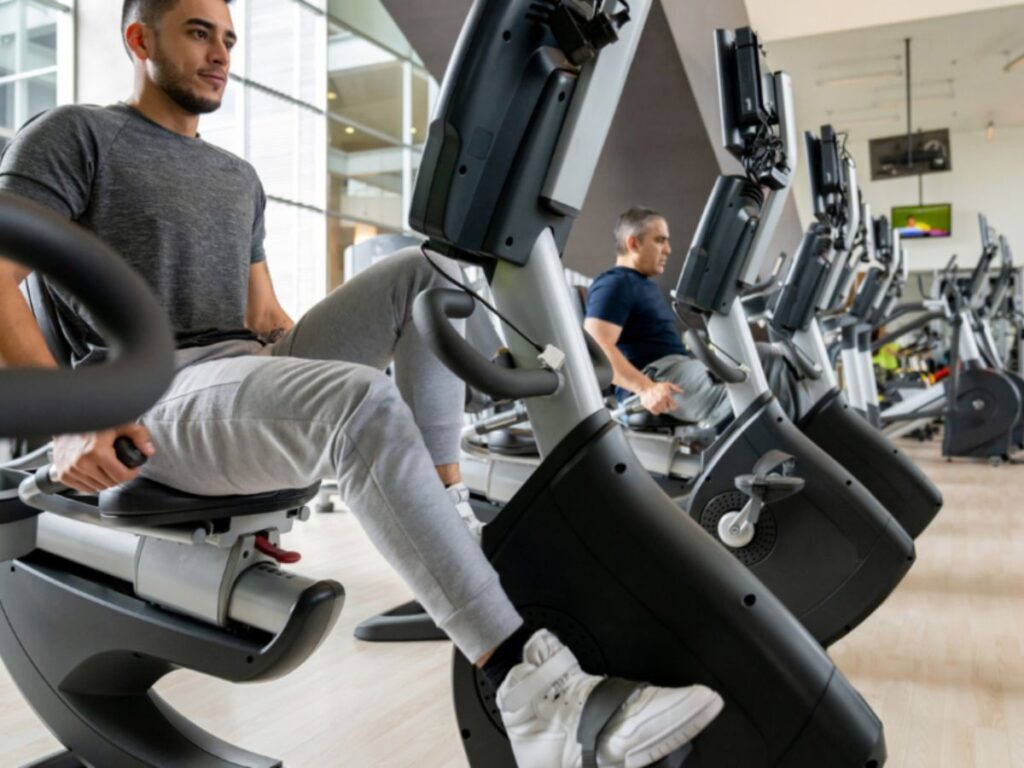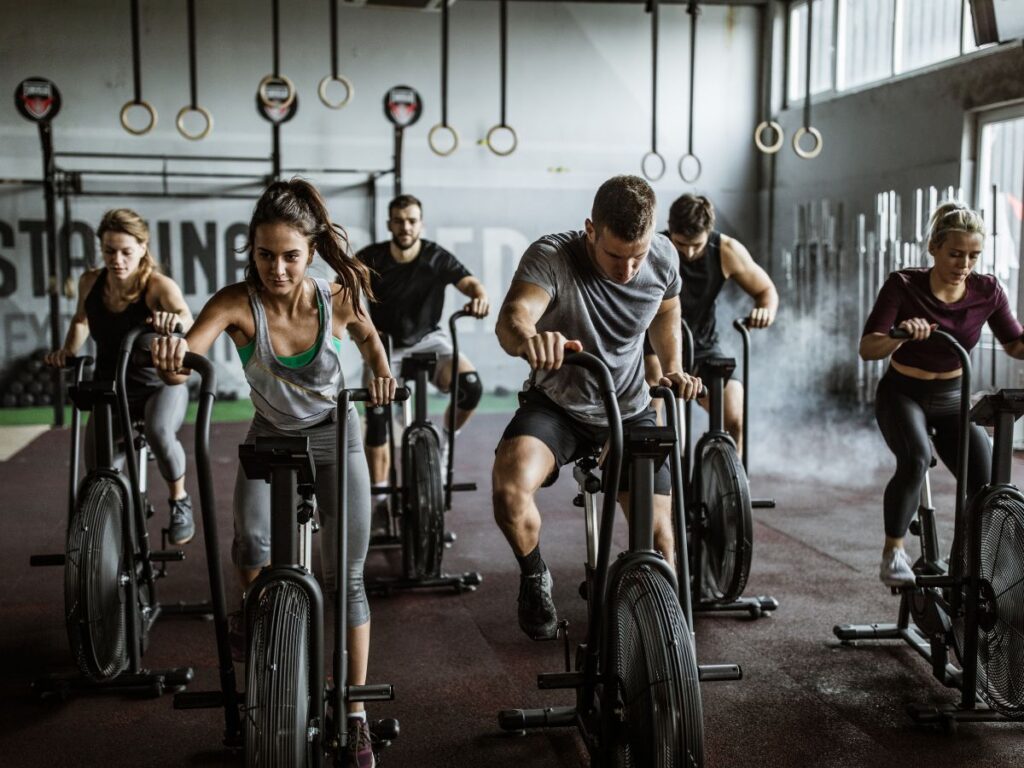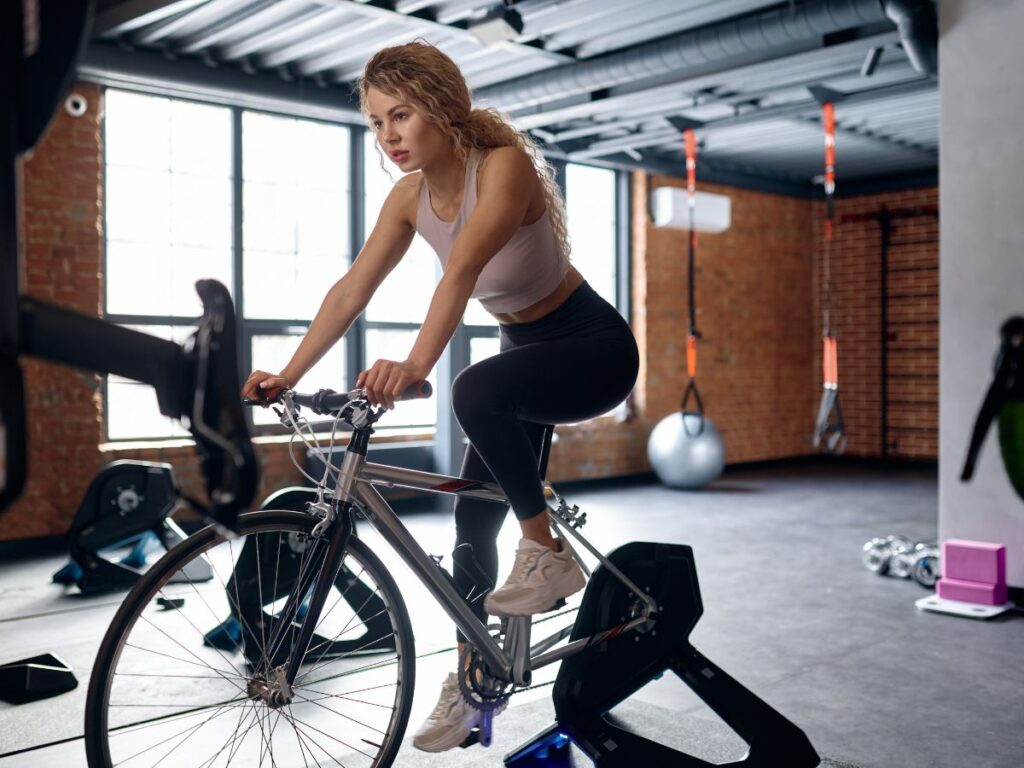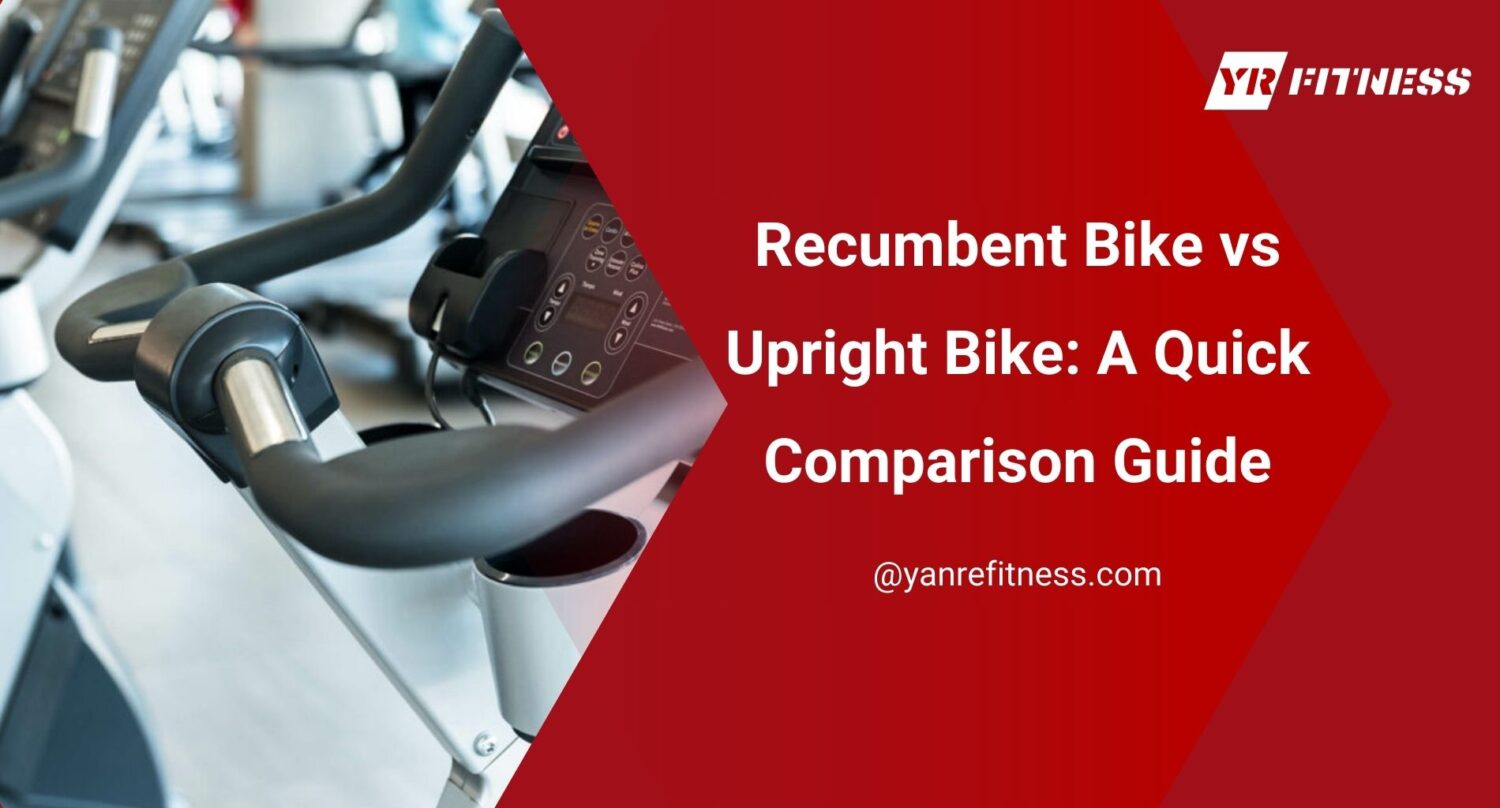When I started managing equipment rollouts, I didn’t think too hard about recumbent bike vs upright bike. Then the complaints started rolling in: wrong posture, wrong feel, wrong fit.
I learned quickly.
With experience working alongside gym owners, physical therapy teams, and commercial suppliers, I know what equipment fits which environment, and what to avoid.
My goal is to save you from trial-and-error decisions that cost time and money.
This guide will walk you through the exact differences between recumbent and upright bikes, and help you match the right one to your users.
Let’s get into it!
Table of Contents
- Quick Comparison Chart
- 1. What Is a Recumbent Bike?
- 2. What Is an Upright Bike?
- 3. Seating Position and Ergonomics
- 4. Back and Joint Support
- 5. Cardiovascular Benefits
- 6. Muscle Engagement and Workout Intensity
- 7. Space and Footprint
- 8. Learning Curve and User Experience
- 9. Cost and Maintenance
- 10. 4 Tips to Consider When Choosing Between Bikes
- Conclusion
Quick Comparison Chart
Here’s a quick-glance comparison chart to help you weigh the differences between recumbent bikes and upright bikes. This chart summarizes everything we’ve covered, making it easier to match the right bike to your facility’s goals and your users’ needs.
Category | Recumbent Bike | Upright Bike |
Seating Position | Reclined, chair-like seat with full back support. | Vertical seat similar to a traditional road bike. |
Ergonomics | Designed for comfort and long sessions. | Prioritizes performance and upright posture. |
Back and Joint Support | Excellent for lower back and joint relief. | Requires more core engagement and balance; may stress knees. |
Cardiovascular Benefits | Great for steady-state cardio and lower-intensity endurance. | Ideal for interval training and high heart-rate workouts. |
Muscle Engagement | Primarily targets lower body (quads, hamstrings, glutes). | Engages more muscle groups, including core and upper body. |
Workout Intensity | Generally lower unless resistance is manually increased. | Naturally higher intensity and effort output. |
Space and Footprint | Larger and wider; best in rooms with more floor space. | Compact and easy to fit in high-density areas. |
Learning Curve | Very beginner-friendly; minimal setup required. | Slightly steeper learning curve; best for experienced users. |
User Experience | Comfortable, stable, and low intimidation factor. | More dynamic and physically demanding. |
Cost | Typically higher upfront cost. | Often more affordable and budget-friendly. |
Maintenance | Less frequent wear but harder to service due to size. | Easier to service; parts are usually more accessible. |
1. What Is a Recumbent Bike?
When I think of a recumbent bike, I picture something built for comfort and ease. It leans back, keeps your feet forward, and offers a supportive seat that feels more like a chair than a saddle. I like how it takes pressure off the lower back and keeps the whole ride smooth, especially for anyone trying to avoid joint strain.
I usually recommend recumbent bikes for spaces that serve older adults or rehab clients. It’s one of those machines that makes fitness more accessible without sacrificing effectiveness. If your facility needs something approachable for a wide range of users, I think a recumbent is worth serious consideration.

2. What Is an Upright Bike?
I see upright bikes as the no-nonsense, classic cardio option. They sit tall, ride like a regular outdoor bike, and give users that forward-leaning posture that naturally works the core. Whenever I’m asked about equipment that fits tight spaces but still pushes users, this is one I tend to bring up early.
For high-energy environments or general-use gyms, upright bikes just make sense. They’re versatile, space-efficient, and familiar to most riders. If you want something that delivers both challenge and flexibility, I think the upright bike holds its ground well.

3. Seating Position and Ergonomics
Whenever I compare these two bikes for layout and comfort, seating position is the first thing I look at. The way a rider sits affects posture, comfort, and how long they’ll actually stay on the bike, so it’s a big deal when outfitting any fitness space.
Recumbent Bike
- Reclined, Chair-Like Seat: I like how the wide, padded seat feels more like sitting in a regular chair. It keeps the body supported from the hips to the shoulders.
- Pedals Positioned Forward: I’ve noticed users push forward rather than downward. That changes how the hips and knees move and feels less intense on the lower body.
- Lower Center of Gravity: The low profile adds a grounded feel during use. It also helps create a sense of stability that puts new riders at ease.
- Backrest Adds Postural Comfort: I find the built-in back support makes a real difference for posture. It encourages an upright spine without forcing core engagement.
Upright Bike
- Traditional Vertical Posture: I often compare the seating to a standard outdoor bike. Riders sit upright with the pedals directly beneath them.
- Smaller, Narrower Saddle: I’ve noticed the upright seat feels much more compact. It can take some adjustment for users not used to that pressure point.
- Forward-Leaning Position: Users typically lean forward slightly to reach the handlebars. That posture engages the core and upper back more than on a recumbent—and complements total-body routines often anchored by equipment like a power cage or squat rack.
- Higher Center of Gravity: The elevated seat gives a taller, more exposed ride. It requires more balance and body control, especially for new users.
- Less Back Support Built-In: Uprights don’t come with a backrest. That puts more pressure on users to maintain their posture throughout the session.

4. Back and Joint Support
I always pay close attention to how each bike supports the body, especially for users dealing with back pain or joint issues. Good support can make the difference between a positive workout and one that causes discomfort. That’s why I look closely at frame design, seat structure, and riding posture when evaluating these bikes.
Recumbent Bike
- Strong Lower Back Support: I like that the backrest gives full lumbar contact throughout the ride. It keeps the spine in a neutral position, which helps reduce strain.
- Reduces Knee and Hip Pressure: The forward pedal design allows for a more natural leg extension. That takes pressure off sensitive joints during both high and low resistance settings.
- No Load on Wrists or Shoulders: Because riders don’t lean forward, the upper body stays relaxed. That helps avoid tension buildup in the arms or neck.
- Safe Option for Joint Conditions: I often see recumbents used in arthritis and physical therapy programs—similar to how many wellness-focused spaces lean toward ellipticals over treadmills for low-impact cardio. They allow users to stay active without risking flare-ups.
- Even Weight Distribution: The reclined posture spreads weight across the seat and back. That relieves stress from pressure points and supports longer sessions.
Upright Bike
- Engages Spine and Core: I’ve noticed that upright riders have to maintain their own posture. That can be beneficial for core strength but harder for those with back issues.
- More Load on Knees: The vertical pedal motion increases stress on the knee joints. It’s something I consider if a user has past injuries or joint sensitivity.
- Less Natural for Rehab Users: Upright bikes demand more balance and body awareness. I tend to steer newer or recovering users toward other options.
5. Cardiovascular Benefits
When I look at bikes for heart-health programs or general fitness plans, I always think about how easily they help users maintain a solid cardio routine. It’s not just about how hard someone can push, it’s also about how likely they are to keep showing up and riding. Both bikes support cardiovascular conditioning, but in different ways.
Recumbent Bike
- Encourages Consistent Cardio Sessions: I find that comfort leads to longer workouts. That steady effort helps users build aerobic endurance over time.
- Keeps Users in a Safe Heart Rate Zone: Recumbents make it easier to stay in moderate intensity. That’s useful for fat-burning and long-duration training.
- Less Intimidating for New Users: Because the effort feels lighter, users don’t get discouraged early on. That increases the chances they’ll return and improve gradually.
- Ideal for Recovery-Based Conditioning: I often see recumbents in cardiac rehab programs. They let users reintroduce cardio with minimal stress.
Upright Bike
- Higher Peak Heart Rate Potential: I find users can spike their heart rate faster on uprights. That makes them ideal for interval training and heart-rate-based routines.
- Great for Short, Intense Sessions: These bikes deliver results in less time. That’s helpful in gyms where members have tight schedules.
- Works More Muscle Groups Simultaneously: More engaged muscles mean the heart works harder. This amplifies cardio output per minute.
- Better for Conditioning Athletes: Upright bikes suit users who want to replicate road cycling intensity. They’re common in endurance-focused programs for that reason.
- Built for Interval Flexibility: I like how upright bikes shift easily between steady pace and sprint modes. That helps users hit multiple training zones in one ride.
6. Muscle Engagement and Workout Intensity
Always look at how much of the body each bike actually works, and how hard someone feels like they’re working. The position, posture, and movement pattern really affect muscle use and workout intensity. Whether the goal is light conditioning or full-throttle effort, the differences here definitely matter.
Recumbent Bike
- Primarily Lower-Body Focused: I’ve found the legs do most of the work here. The glutes, hamstrings, and quads stay active through the entire ride.
- Low Overall Intensity by Default: Because of the reclined position, users don’t naturally push themselves as hard. Resistance needs to be increased manually to raise the challenge.
- Limited Core and Upper Body Use: I rarely see these bikes work beyond the legs. Without balance demands or upright posture, the rest of the body stays fairly relaxed.
Upright Bike
- Activates More Total Muscles: I see more muscle groups working at once, especially the core and upper body. Riders need to stabilize themselves throughout the ride.
- Core Engagement Comes Naturally: The upright position pulls the abs and lower back into the effort. It’s one of the reasons upright rides feel more physically demanding.
- More Suitable for Strength Intervals: Users can crank up resistance and simulate hill climbs. That lets them build strength while still training cardio.
- Supports Standing Pedal Work: Standing on the pedals recruits more muscles and adds intensity. I find this great for HIIT or power-focused training.
- Increased Muscle Burn in Less Time: Because more of the body is involved, workouts feel tougher even if they’re shorter. That’s a win for time-efficient programs.
7. Space and Footprint
I factor in space before recommending any cardio equipment. A bike might check all the right boxes performance-wise, but if it’s tough to fit into the layout, or move around when needed, it’s going to cause issues down the line. That’s where the design and shape of these two bikes come into play.
Recumbent Bike
- Takes Up More Floor Area: I’ve found that recumbents stretch out a lot more than people expect. That long, low frame needs extra clearance both front to back and side to side.
- Wider Than Most Cardio Equipment: The larger seat adds to its width. That’s something to keep in mind when you’re planning rows or tight configurations.
- Harder to Move Once Placed: These bikes are a bit clunky to shift around. I usually treat them as fixed installations.
- Stable but Space-Hungry: The wide base adds security, but it eats up valuable real estate. For high-traffic areas, that tradeoff might be tough.
- Best Suited for Spacious Rooms: I tend to suggest recumbents only when space isn’t a limiting factor. They shine in rehab rooms or wellness centers where comfort takes priority over capacity.
Upright Bike
- Compact and Easy to Fit: I like how YR Fitness upright bikes slip into smaller spots. Their vertical build makes them ideal for tight commercial layouts.
- Better for High-Density Setups: You can line these up in a row with minimal spacing. That works well in cardio zones where maximizing equipment count is key.
- Lighter and Easier to Move: Upright bikes usually weigh less than recumbents. That makes reconfiguring a room or moving them for cleaning much easier.
- Works in Multi-Use Environments: Their compact size means they can share space with weights, mats, or other machines. I’ve seen them used effectively in hybrid rooms and corporate fitness areas.
8. Learning Curve and User Experience
Think about how fast someone can get comfortable with a machine, especially in shared fitness spaces where you don’t always have time to walk each person through it. If users feel awkward or unsure on day one, they’re less likely to come back. That’s why ease of use and general experience play such a big role in bike selection.
Recumbent Bike
- Very Beginner-Friendly: I’ve seen users figure these out in seconds. The chair-like feel helps people feel secure and ready to start.
- Low Balance Demand: You don’t have to stabilize your body or engage your core much. That’s a big win for people with limited mobility or coordination.
- Comfort Encourages Repeat Use: I think users are more likely to return to a machine that feels good from the start. That’s what makes recumbents great for consistent cardio habits.
- No Need for Form Coaching: The fixed posture takes guesswork out of the ride. It’s easy to get on, adjust, and just go.
Upright Bike
- Feels Familiar to Cyclists: I find that experienced riders jump on and go without hesitation. The setup mirrors what they already know from road cycling.
- Takes Time to Get Comfortable: The smaller seat and forward lean can feel awkward at first. New users might need a few tries to get their positioning right.
- Requires More Balance and Engagement: Upright bikes ask a bit more from your body. That adds value but also increases the learning curve.
- Posture Matters More: If someone slouches or shifts too much, it affects their form and comfort. I usually recommend some basic coaching when users first start.
9. Cost and Maintenance
When I help businesses choose equipment, budget and upkeep always come into the conversation. It’s not just about the price tag, it’s about how often parts need attention and how that affects daily operations. A bike that costs less up front might cost more over time if it breaks down too often or is expensive to repair.
Recumbent Bike
- Higher Initial Investment: I’ve found that recumbents usually cost more up front. The larger frame and extra seat support increase the overall build complexity.
- Less Wear from Intense Use: Because users ride in a more relaxed position, parts tend to wear slower. That can help reduce maintenance calls in low-traffic settings.
- Bulkier Parts Can Be Harder to Replace: Repairs can be more involved due to the size and design. I always recommend checking for part availability before purchasing in bulk.
Upright Bike
- More Budget-Friendly to Purchase: Upright bikes usually fall on the lower end of the price range. That’s why I often suggest them for budget-conscious gyms or startup spaces.
- Compact Design Means Simpler Parts: There’s less to go wrong in terms of mechanics. That can save time and cost when routine fixes are needed.
- Seat and Pedals See Faster Wear: I’ve noticed users shift around more during intense workouts. Over time, that puts more stress on the saddle and crank components.
- Easier to Service and Move: Uprights are lighter and more open in design. That makes them easier for maintenance teams to access and relocate.
- Good ROI for High-Traffic Facilities: If you need volume and turnover, uprights hold up well. They’re built for quick use and frequent rotation.
10. 4 Tips to Consider When Choosing Between Bikes
It’s not about which bike is better, it’s about which one makes the most sense for your users, space, and goals. The right questions up front can save time, budget, and frustration later on. Here’s how I break it down when offering advice.
#1 Know Your Users First
Start by thinking about who will actually be using the bikes. If your space serves older adults, rehab clients, or beginners, a recumbent bike might be the safer, more inviting option. On the other hand, upright bikes tend to appeal more to younger, active users who are comfortable with higher intensity. It’s not uncommon for a mixed facility to stock both for broader appeal.
#2 Match the Equipment to the Space
Footprint really matters, especially when you’re working with a tight floor plan. Upright bikes are easier to fit along walls or into narrow cardio zones, while recumbents need more breathing room. If you have a large wellness area or rehab zone, the recumbent will likely feel right at home. For compact gyms or group cardio areas, upright bikes can help maximize your layout.
#3 Consider the Maintenance Reality
No matter how well a machine is built, it’s going to need some upkeep. Recumbents tend to require less frequent servicing thanks to their lower impact use, but the larger frames can be trickier to access. Upright bikes are usually easier to maintain, especially for teams working with high-traffic gyms.
Replacement parts are often more affordable and widely available too. YR Fitness builds their bikes with simplified maintenance access in mind, which is a big help for facility managers.
#4 Think Long-Term Value, Not Just Price
It’s easy to focus on the initial price tag, but total value comes from daily use and long-term reliability. A slightly higher upfront cost may be worth it if the bike gets used more consistently.
Recumbents tend to perform well in loyalty-driven environments like wellness centers, while upright bikes are often better in fast-paced or class-heavy gyms. Evaluate which model aligns with your programs, retention goals, and energy style. That’s where I find smart investments truly pay off.
Conclusion
Now you know the difference.
You’ve seen the comfort of recumbents, the power of uprights, and how each fits different needs.
Whether you’re outfitting a clinic or building a high-energy gym, the right bike makes the ride smoother for everyone.
So, what’s stopping you?
Let’s make your gym smarter, stronger, and easier to use.
Contact YR Fitness today and get expert help on your bike lineup.
Related articles:






